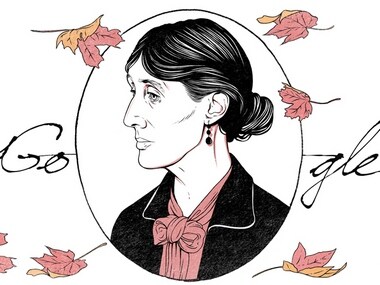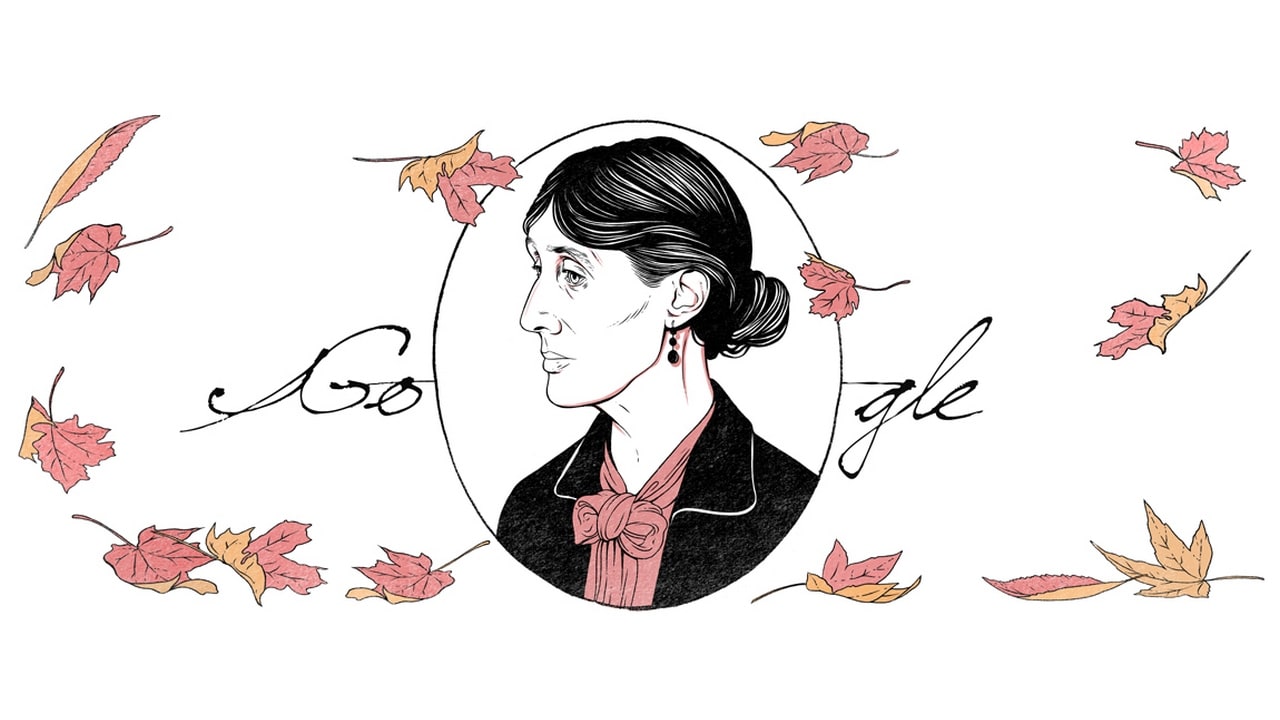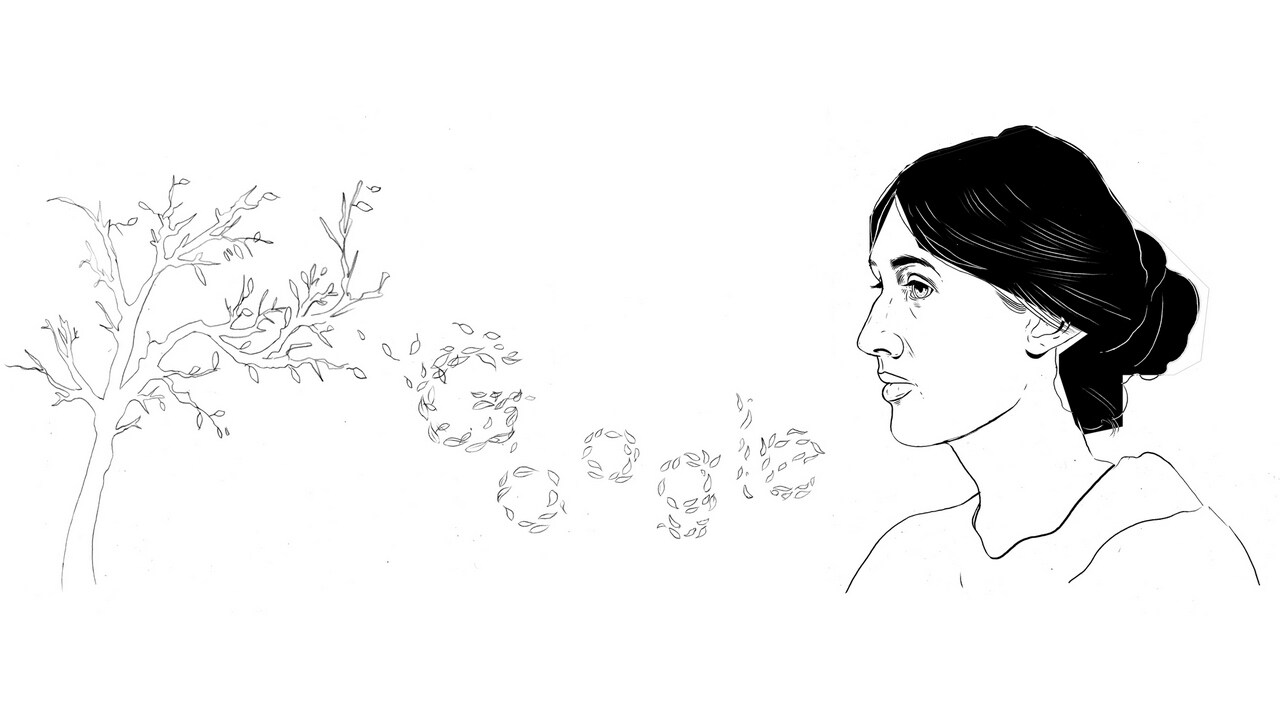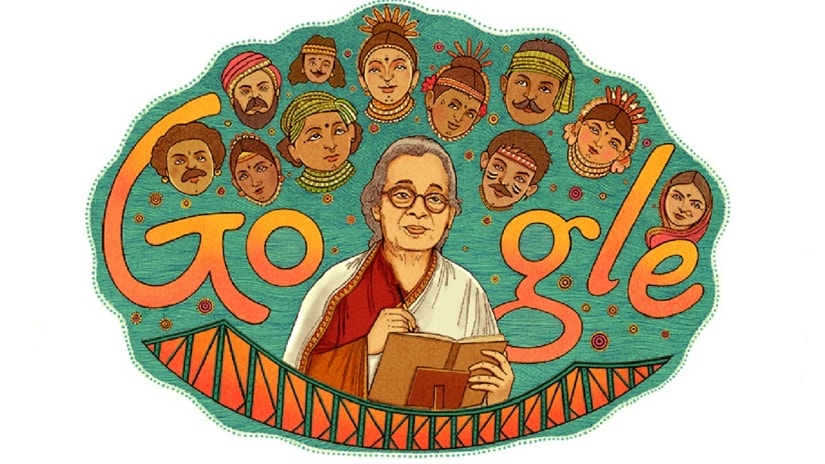A Google Doodle honouring Virginia Woolf has been released on 25 January 2018, to commemorate what would have been the Mrs Dalloway writer's 136th birthday.

The Google Doodle celebrates Virginia Woolf’s 136th birthday. Google
The doodle depicts Woolf's now iconic profile -- her hair collected in a bun at the nape of her neck, a pose that shows up her aquiline nose in sharp relief. Created by London-based illustrator Louise Pomeroy, the doodle "celebrates Woolf’s minimalist style" and the writer is seen surrounded by falling autumn leaves -- a visual theme that appeared frequently in her works.
Born Adeline Virginia Stephen in 1882, Woolf was part of a large family (both her parents had children from previous marriages). She and her sister were homeschooled in contrast to their brothers, who went on to Cambridge. While she was fond of her brothers, the difference in their circumstances was not lost on Virginia, and is believed to have shaped the beginnings of her feminism.
Other family situations also had a deep and lasting impact on Virginia: She and her sister Vanessa were reportedly subjected to sexual abuse by two of their half-brothers. She later wrote about it in the autobiographical A Sketch Of The Past. The early loss of her mother (when she was only 13), one of her half-sisters and her beloved brother also sent Virginia into depressive episodes. The worst of these was when she lost her father as well, in 1904.

The Google Doodle celebrates Virginia Woolf’s 136th birthday. Google
By 1912, Virginia had married the impecunious Leonard Woolf. By most accounts (including Virginia's) it was a loving partnership, despite her bouts of mental ill health. Before her marriage, Virginia had become part of the Bloomsbury Group -- a group of intellectuals and writers who included (her brother-in-law to be) Clive Bell and Roger Fry, among others. Virginia's first novel, The Voyage Out, was published in 1915. The works she is best remembered for, however, include Mrs Dalloway (1925), To the Lighthouse (1927) and Orlando (1928), and the book-length essay A Room of One's Own (1929; so titled because of her articulated philosophy that "A woman must have money and a room of her own if she is to write fiction"). She also ran the publishing imprint Hogarth Press along with her husband.
Apart from Virginia's own work, Hogarth Press notably published the books of Vita Sackville-West. Vita and Virginia had an affair spanning several years; on its conclusion, they remained friends until Virginia's death.

An early draft of the Google Doodle. Google
On 28 March 1941, Virginia Woolf walked out of her home, leaving behind notes for her sister and husband. On reaching the nearby river, she filled the pockets of her overcoat with stones and walked into it, drowning herself. The suicide could not be confirmed until her body washed up miles away, three weeks later. The years had presumably taken a toll on her already fragile mental state -- the early stages of World War I, the bombing of her London home adding to her depression. She wrote to Leonard of being unable to face the prospect of being ill again, of feeling that she wouldn't be able to return from the precipe on which she found herself. At the spot where her remains were cremated, Leonard Woolf erected a marker with these lines from her book The Waves:
"Against you I fling myself, unvanquished and unyielding, O Death!
The waves broke on the shore.”
Published Date: Jan 25, 2018 06:46 AM | Updated Date: Jan 25, 2018 07:24 AM


















